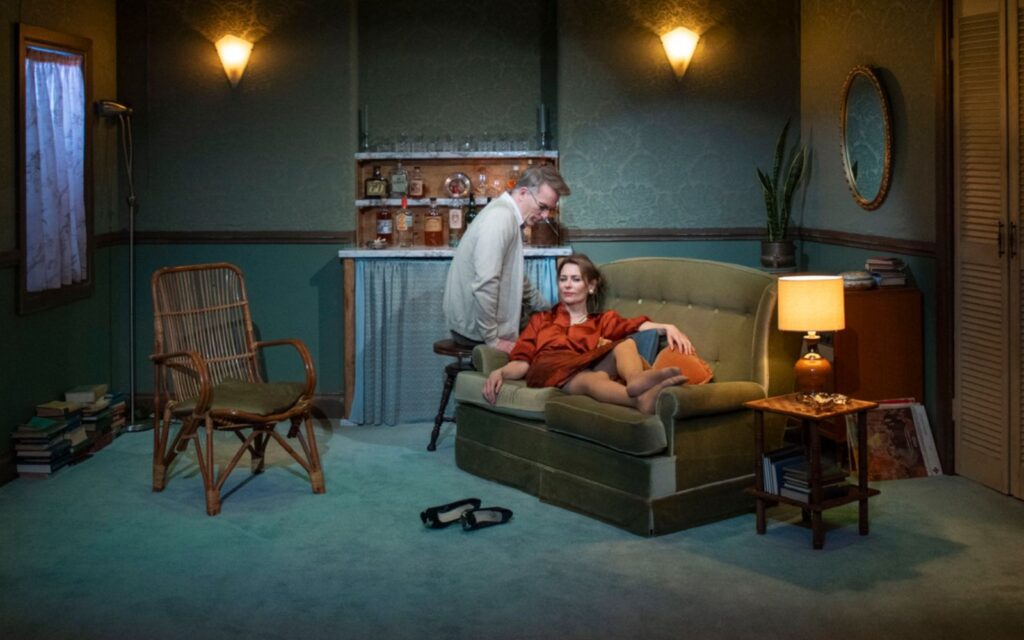Sailor Jerry is the subject of the 2009 documentary, Hori Smoku Sailor Jerry: The Life Of Norman K Collins, which will be screening at the Australian Centre for the Moving Image as part of its First Look program. Often termed ‘the godfather’ of American-style tattooing, this is not only a look at one of tattooing’s most influential figures, but also charts the history of tattoo culture in the United States from its subcultural origins to its more mainstream present.
“I first came across Sailor Jerry just going into tattoo shops when I was a kid,” recalls director Erich Weiss, who grew up in Philadelphia (where he still lives and works today). “This was when tattoo shops were still fairly scary places. You walk in and all you can really do is look at the artwork on the walls, because if you look at anyone working there they’d probably kick you out. It was intimidating.”
“Sailor Jerry’s art always struck me as something that was interesting and different from the others. I’ve always liked that bold, Americana style…and I just always noticed it was done by Sailor Jerry”.
When Weiss embarked on the project in 2006, he expected it would take a couple of months at most. Three years later, the film was finally finished. Perhaps a reflection of tattooing’s clandestine, criminal origins, Sailor Jerry (who died in 1973) was inherently distrustful of the media, making information about his life difficult to find. But even tougher was the process of tracking down the tattooist old-timers who were Jerry’s contemporaries, and getting these rough-and-ready characters to talk.
Weiss persevered despite “a lot of closed doors, a lot of slammed phones…It was a progression…Someone would call another person and vouch for me. It just took so long to even find some of these guys”.
The documentary pieces together Sailor Jerry’s life through archival footage and interviews with his colleagues and protégées, including Don Ed Hardy, Michael Malone, Lyle Tuttle, Zeke Owen and Eddie Funk. The portrait that emerges is a mythic one, and one filled with innate contradictions – Sailor Jerry was staunchly right wing (Nixon was purportedly too liberal for him) yet also anti-authoritarian, in awe of the Japanese tattoo masters yet harbouring the racism of the Second World War, a mythmaker who scorned the media, and a gifted raconteur with the mouth of a sailor.
“He definitely was a complete storyteller and shifter,” says Weiss. “He really was the symbol of the rough and tumble lifestyle, and part of tattooing is storytelling and embellishing”.
Sailor Jerry eventually settled in Honolulu to start his tattoo shop. Hawaii was hit badly by events during the Second World War, but became a kind of liminal space for armed serviceman on their way to or from the Pacific War. The Hotel Street district in Chinatown (in which Jerry’s shop was located) became an infamous playground where hundreds of thousands of servicemen went to get “stewed, screwed and tattooed”. In the good ol’ days, a turn with a prostitute and a tattoo cost the same amount – three bucks.
One of the most fascinating stories that emerges is that of Sailor Jerry’s radio show, Old Ironsides, which was broadcast on a Honolulu station’s graveyard shift. When the microphone went on, the gruff sailor was transformed into an old-fashioned radio personality. “It was a very social libertarian view on life,” explains Weiss. “He would rant about the government, but then he would also talk about the flowers and the fauna of Hawaii, and he would recite poetry”.
Yet regardless of this mythology, it is the style of tattooing that Sailor Jerry developed that he is most renowned for today. After spending time in Asia as a seaman, Jerry’s unique aesthetic brought together Asiatic and American influences. “He’s credited as being one of the first tattoo artists that blended the nuances and colouring and storytelling of the Japanese masters with the bold line look and topics of American tattooing…He took pieces of American history and tied them in”.
The film concludes with some wistful sense that tattooing as an art form is dying, or at least the artistry that tattooists like Sailor Jerry practiced. But when I raise this with Weiss, he disagrees. “I think [Sailor Jerry] definitely set a mark in the art and where it could go…He really evolved the category and he’s definitely a benchmark in tattoo history.
“[But] I think it’s an art excelling. I think it’s growing…I think what I was talking about was that underground culture is dying and some of the designs themselves were symbolic of a different time period. The sailor tattoos had stories behind them, and some of that folk art is being lost”.
Despite Weiss’ obvious reverence for Sailor Jerry, however, he’s not so sure that Jerry would feel the same way about him. When I ask Weiss how he thinks Sailor Jerry would’ve responded to the film, he begins to laugh. “He would’ve hated it. He would’ve completely hated it. He probably would’ve busted my jaw open”.







